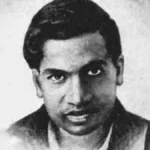This article underlines a simple way to calculate the remainder of any improper fraction easily. This also includes fractions of the form where the numerator has very high power, for example, fractions of the form such as 2^50/15.
Step 1:- convert the power fraction by utilizing the powers in the least possible way that the base numerator is greater than the denominator. For the above that would be (16)^12 x 4/15
Step 2:- since 4/15 cannot be simplified anymore we will keep it aside. Now for 16^12/15, we know that the remainder for 16/15 is 1. So the remainder for 16^12/15 will be the same as 1^12/15. That is, for any number of the form a^n/b, the remainder will be the same for this fraction and the fraction formed by substituting a with the remainder of a/b (say p), ie, the fraction p^n/b. for the above, that becomes 1^12/15
Now all we have to do is keep repeating the above process for any number. This will keep reducing the powers down to a number or fraction which we can easily find the remainder from easily. If the fraction is proper, then the remainder is the numerator. For the above, we get 1^12/15 = 1/15 so the remainder is 1.
The above can be proved very simply.
Let us take the number A^n to be divided by some number B.
We can divide the number A into the form Bm + k. [Where m is the closest multiple of B to A and k is the remainder]
Now we get the form (Bm + k)^n to be divided by B.
However, upon expansion of the above binomial, we can see that all the terms of the expansion will have a multiple of Bm of some exponent, except for the last term, ie, k^n.
Since dividing all the other terms by B will give me the remainder as 0, we can simply eliminate them for convenience, and keep k^n which is simply the remainder of A divided by B raised to the power of n.
And henceforth, we can keep repeating the process to get the desired remainder.
Note: The numerator can sometimes be divided into two parts for convenience, of the form as k^n * L/B.
In the above form, L/B is a proper fraction and the exponent part is to be simplified further. We will need to multiply all the proper fractions numerator with the simplified form of the exponent, and if the numerator after the multiplication is greater than the denominator, then find the remainder of the single division which is the answer.






